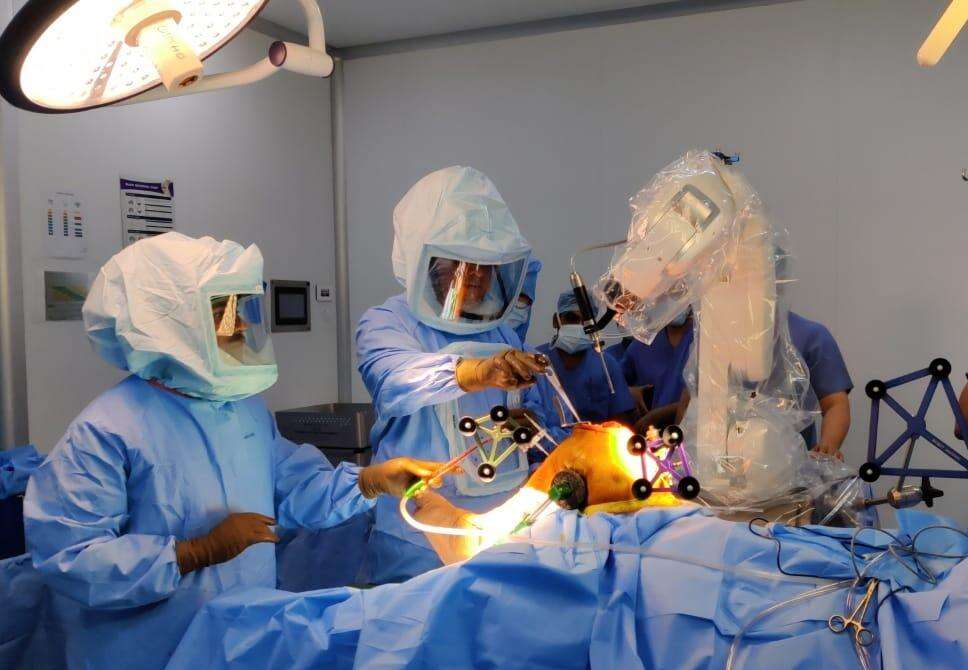 By Dr Chandrashekar P.
By Dr Chandrashekar P.
A total hip replacement surgery that involves replacing the head of the femur and worn out socket is no more a big deal. Why? Because hospitals have become more equipped, thanks to infrastructural efficiency and technological breakthroughs over a recent couple of years. Now, one may walk on the very same day post a total hip replacement surgery. Apart from that, hospital stay has considerably reduced following a hip replacement procedure.
Evolution of Total Hip Replacement Surgery with the introduction of Enhanced Hospital Infrastructure
Minimally invasive surgical approach: The traditional hip replacement surgeries involved detaching some muscles around the hip joint negatively impacting the post-operative results and recovery. With the hospitals becoming better equipped to support minimally invasive techniques, these post-operative problems have reduced. Two minimally invasive approaches – the Mini Posterior Approach (mPA) and the Direct Anterior Approach (DAA) have gained popularity over the years. Both these techniques have made total hip replacement procedures give rise to lesser complications, reduced post-operative pain and quick recovery.
Qualitative and improved implants: Latest bearings like ceramic-on-ceramic and ceramic-on-polyethylene bearings have considerably better resistance to wearing out of the socket when compared with the metal-on-polyethylene bearings that are traditionally used. Superior implant designs, specialized surfaces and bioactive coatings like Hydroxyapatite have led to the enhanced fixation of uncemented implants to the bone. Likewise, fourth-generation cementing techniques have helped to optimise fixation of cemented artificial joints to the bone.
Enhanced Fast Track Recovery After Surgery (ERAS): This is a multi-modal, multi-disciplinary care roadmap for patients undergoing a total hip replacement procedure. ERAS covers the contribution of surgeons, anaesthetists and rehabilitation specialists and aims at accomplishing early recovery. It curbs hospital stay, enhances clinical outcomes and reduces complications.
Advanced techniques lessening hospital stays
The doctors these days use short-acting anaesthetic and other medications that aid in reducing inflammation and pain, thereby facilitating a faster recovery. They also make use of an optimised positioning system for getting X-rays of not just the hips but also the spine and then create a 3D model. This shows them exactly how to place the hip for optimum mobility. Other surgeons are using a surgeon-controlled robotic arm and computer-guided navigation to better position the hip replacement components. This technique allows for less pain and greater mobility after the surgery.
Tips for rapid recovery after total hip replacement surgery
- Get in a very healthy exercise routine
Most hip replacement patients are able to walk on the same day or the next day of surgery; most will resume traditional routine activities within the primary three to six weeks of their total hip replacement recovery.
Once a light-weight activity becomes attainable, it’s vital to include healthy exercise into your recovery program.
Recommended activities include gradually increased walking and light household activities (sitting, standing, climbing stairs). Movement is important for a healthy recovery.
- Pay attention to diet and weight
Excess weight will place stress on your new hip corrective and increase, wear and therefore the risk of complication.
Maintaining a healthy weight before and once your surgery is done, will boost your recovery method. Also, take good care of your diet throughout your recovery.
Exercise to Promote Blood Flow: Certain exercises can help to promote blood flow and prevent clots. These include: regularly squeezing the thigh and calf, motion exercises for the legs that utilize full range of leg motions and walking with or without the assistance of supportive devices (such as walker/cane).
- Prepare the house accordingly
Before your surgery, make sensible modifications to your house in order to make needed things easily accessible. Build plans with friends, family, or caretakers to make sure that somebody can assist with tasks like cooking, bathing, and running errands.
Dr Chandrashekar P. is Sr. Consultant & HOD – Orthopedics at Sakra World Hospital
(DISCLAIMER: The views expressed are solely of the author and ETHealthworld.com does not necessarily subscribe to it. ETHealthworld.com shall not be responsible for any damage caused to any person/organisation directly or indirectly)
Stay connected with us on social media platform for instant update click here to join our Twitter, & Facebook
We are now on Telegram. Click here to join our channel (@TechiUpdate) and stay updated with the latest Technology headlines.
For all the latest Health News Click Here
For the latest news and updates, follow us on Google News.
